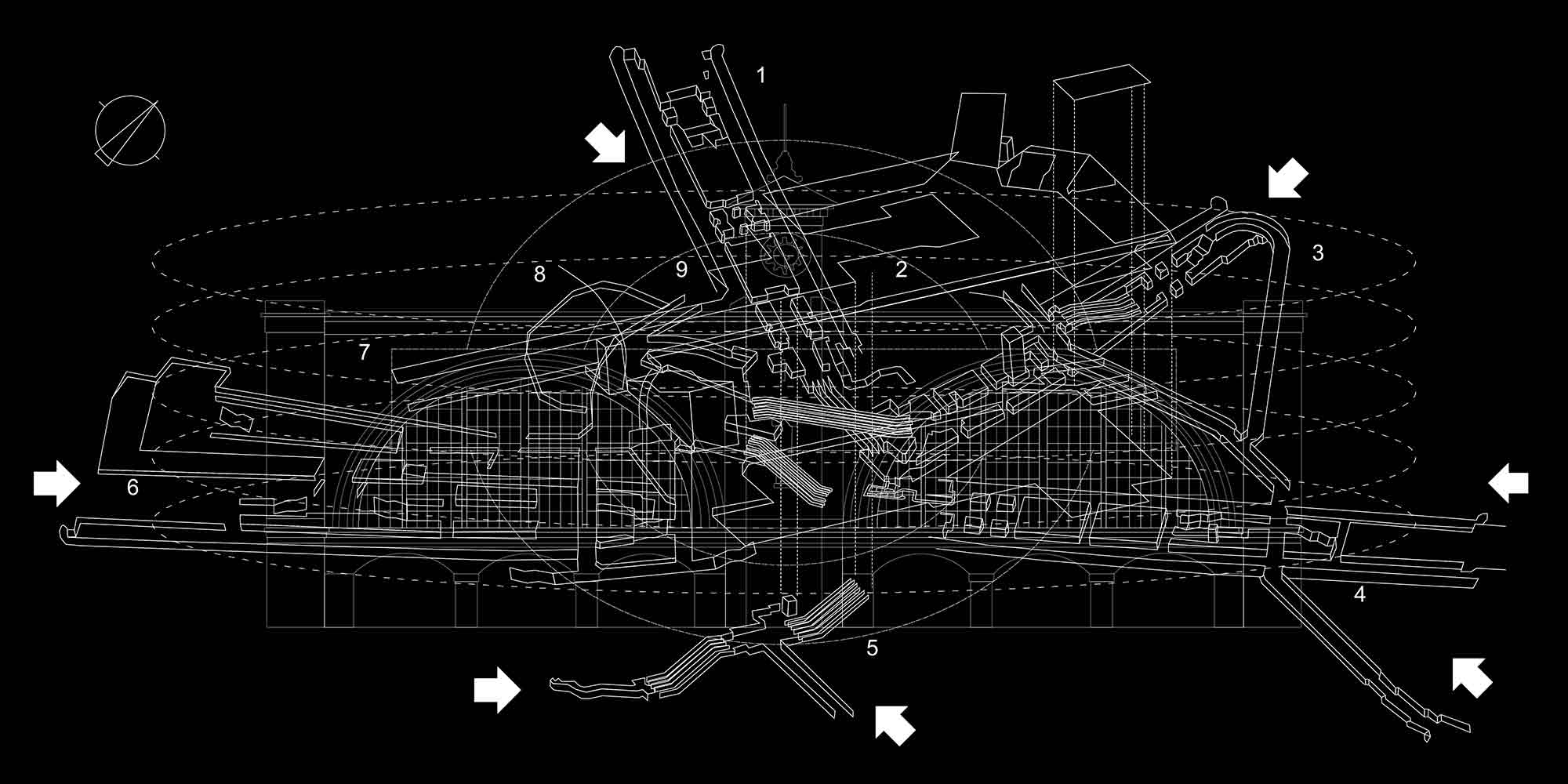
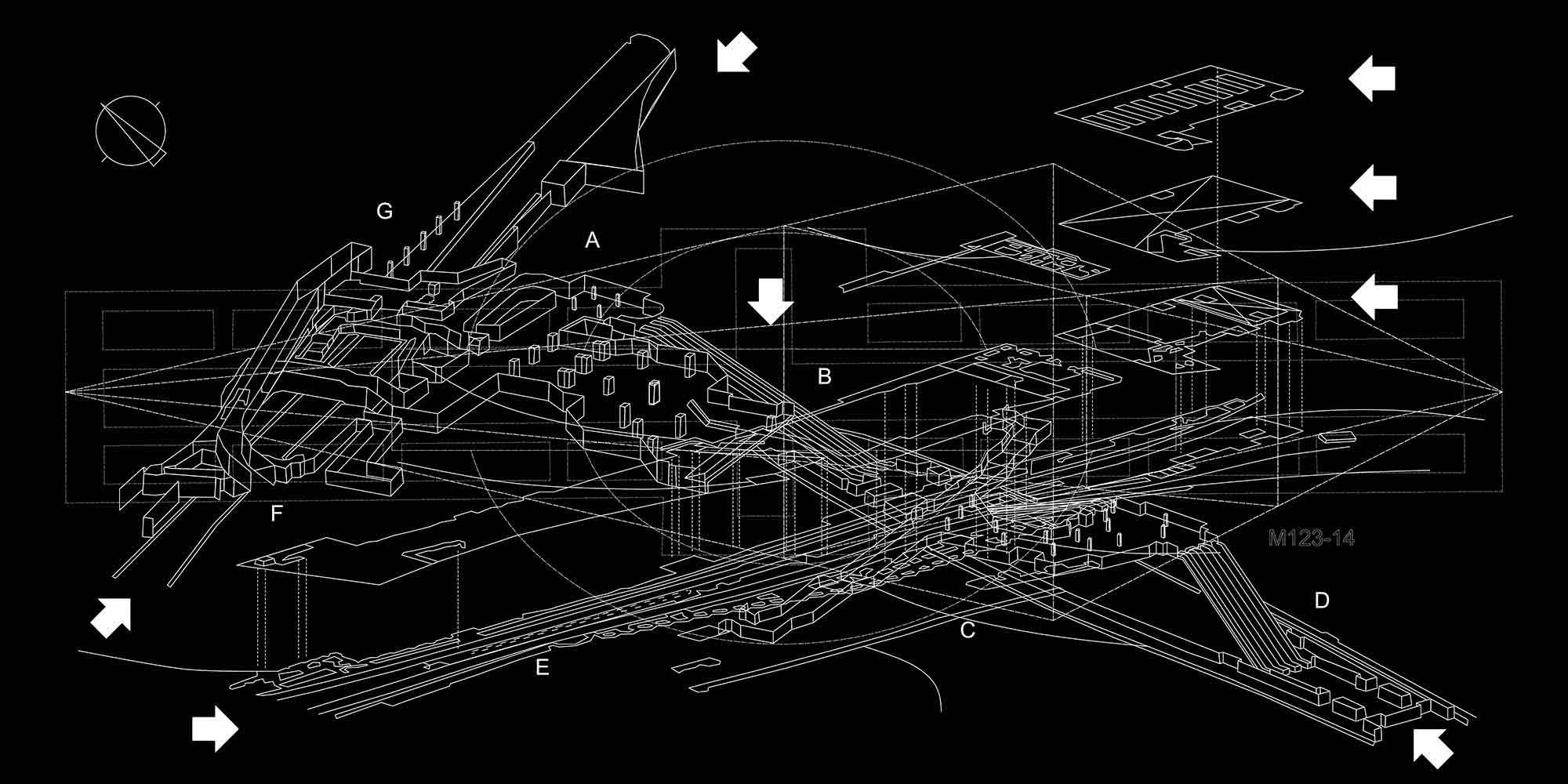
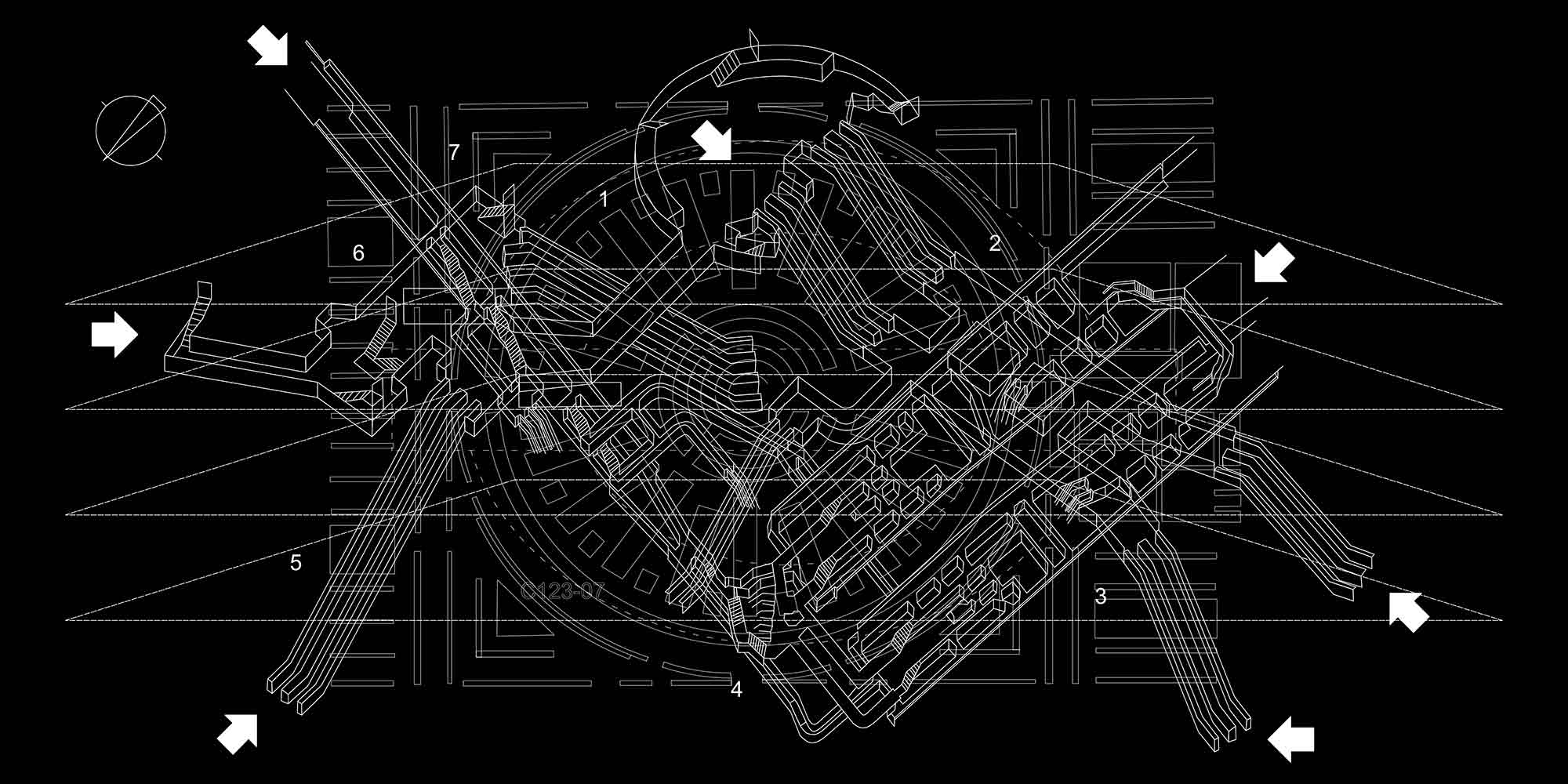
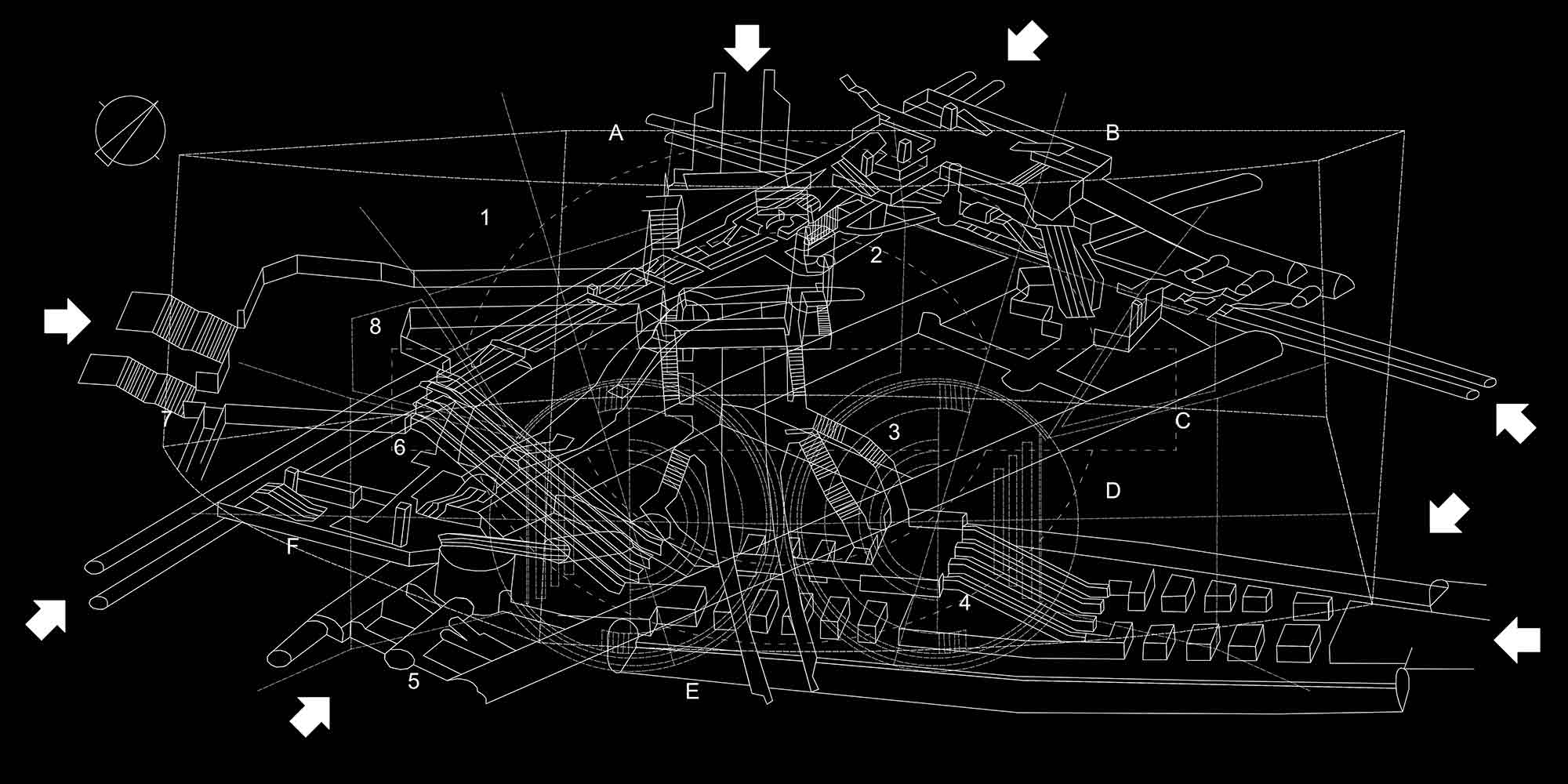
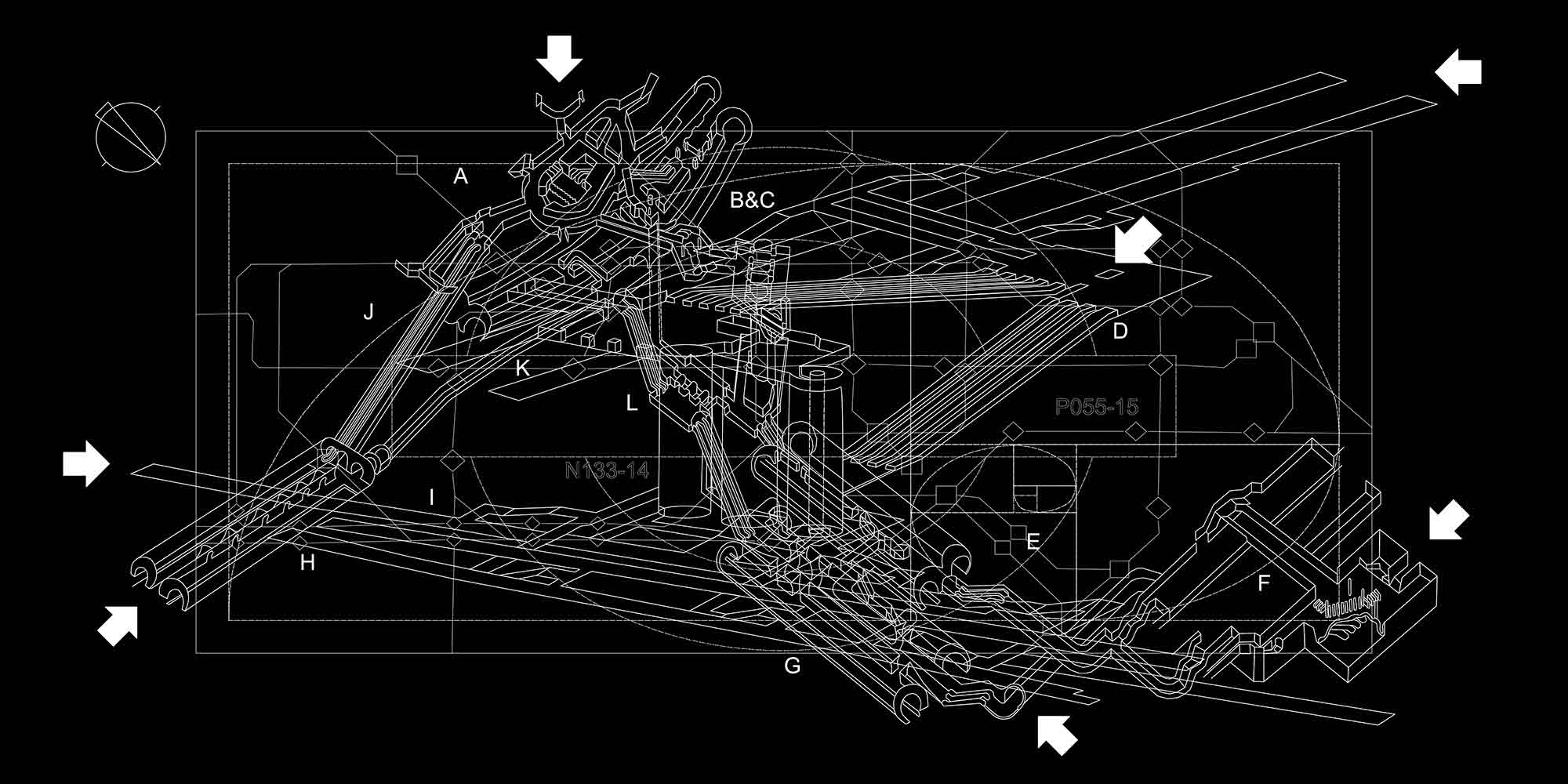

I close the book. I contain the desire to disturb the silence of this room, to shout out your name and mark the beginning thus. Not a cry of love then, but a hypnotic cue: Wake up! And sink deeper into sleep.
This book addresses the London Underground in the context of architectural histories and theories. It aims to indicate that the subterranean transportation system of London, the first of its kind in the world, remains largely unacknowledged in architectural writing with regard to a number of issues: the status of the Underground station as a novel building type, which is essentially different to that of the railway station; the emergence of modernist approaches to space, manifest on the Underground in an unprecedented form of interiority; a perspectival regime that forecloses the horizon within an interior that corresponds to no immediate, inhabitable context; and the question of movement that brings together the built environment, the technologies of transportation, and the techniques of the body in a highly specific conjunction.
It employs a mode of writing that combines fictional storytelling with a theoretical essay. It is written in the first person as a series of research entries and theoretical interpretations offered by an unnamed narrator to his reader in a didactic, yet intimate tone. As the narrative unfolds, the narrator and his reader are revealed to be rewriting and subverting the myth of the labyrinth: instead of a modern-day Ariadne, it is the Theseus-like figure of the perpetual outsider who provides the coil of knowledge and challenges his reader to perform the tauromachia her/himself.
The historical, theoretical and philosophical sources used in the interpretation of the Underground form the main body of this one-sided epistolary exchange. The sources are related in a way that suggests first-hand experiences of the research material and familiarity with the authors whose work the narrator discusses. The authors are introduced as the narrator’s former educators, colleagues or acquaintances; some of the material is related as recollections of conversations with the authors, some as exchanges of letters, other sources merely as experiences of reading. The historical, theoretical and philosophical material is thus rendered inextricable from the circumstances of research and the experience of the city and its architecture – in particular, that symbolic temple to research, The British Library – drawing attention to the immanent conditions of the production of thought, while questioning the authority and dissemination of knowledge proper to academic discourse.
Dr Marko Jobst is an independent researcher and writer based in the UK. Until recently he was Architecture Undergraduate Theory Coordinator at the Department of Architecture and Landscape, Greenwich University, London. He holds a Diploma in Architecture from Belgrade University and MArch, MSc and PhD from The Bartlett School of Architecture, UCL (in Architectural History and Theory). He has practiced architecture in Belgrade and London and taught at a number of London schools of architecture. He has published on the philosophy of Gilles Deleuze and creative/performative writing, and is the author of A Ficto-Historical Theory of the London Underground (Spurbuch AADR, 2017). He is the co-editor, with Hélène Frichot, of Architectural Affects: After Deleuze and Guattari (Routledge, 2020/21) and is currently working on a series of queer fictions sited in Belgrade.
I am interested in fiction, writing that insists on a text’s affective charge, and the role of personal memory in experiencing architectural and urban sites. I am increasingly drawn to experimenting with ways of subsuming theoretical and historical material within literary fiction.
Virginia Woolf, The Waves, 1931 (read in 1990)
Jennifer Bloomer, Architecture and the Text, 1993 (read in 2000)
Peter Weiss, The Aesthetics of Resistance, 1975 (read in 2015)






































































